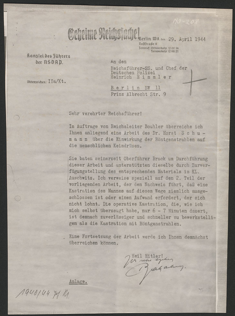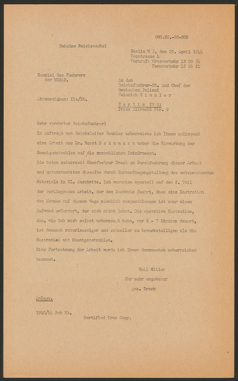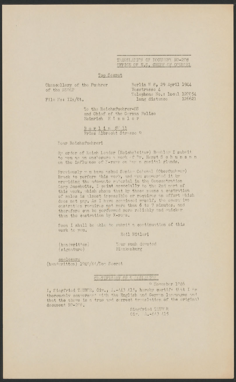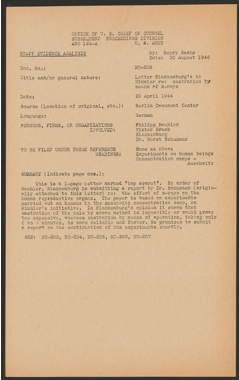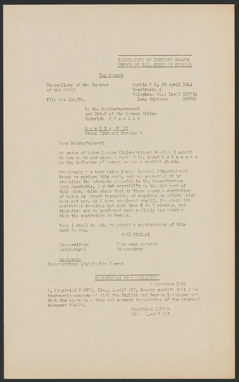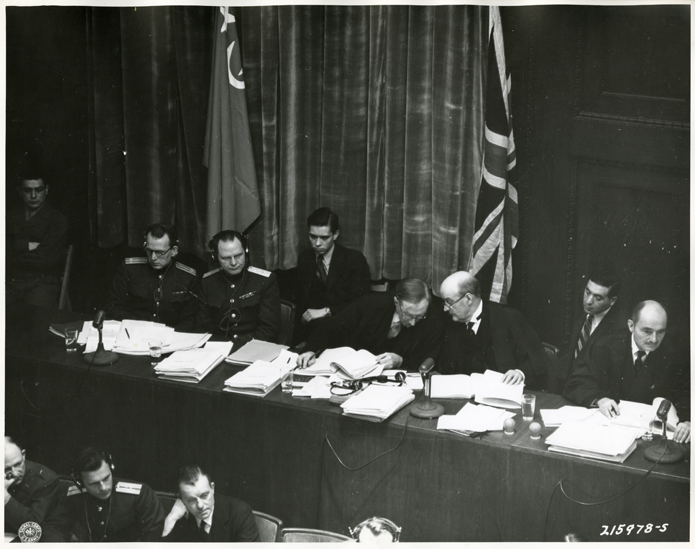
Approaches [initial, stubbed-out draft of this page]
The Nuremberg trials were a complex set of proceedings, taking several years to complete. Here are some ways to start research with our collection.
The People of the Nuremberg Trials
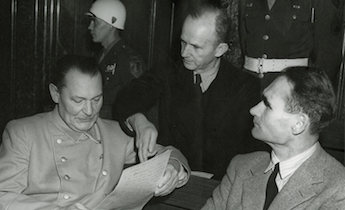
Defendants
This section outlines the organizations and leading individuals in four overlapping spheres of Nazi Germany: the Reich ministries (the government); the Nazi party; the SS; and the Wehrmacht (the armed forces). Adolf Hitler was the head of all four of these sectors, and they became increasingly interconnected over time.
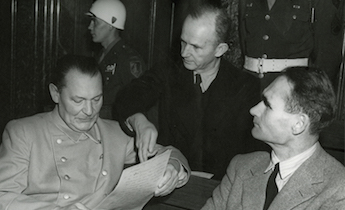
Authors
This section outlines the organizations and leading individuals in four overlapping spheres of Nazi Germany: the Reich ministries (the government); the Nazi party; the SS; and the Wehrmacht (the armed forces). Adolf Hitler was the head of all four of these sectors, and they became increasingly interconnected over time.
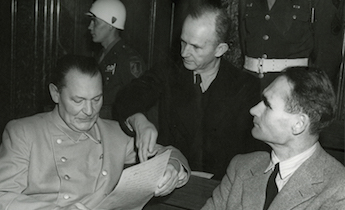
Speakers
This section outlines the organizations and leading individuals in four overlapping spheres of Nazi Germany: the Reich ministries (the government); the Nazi party; the SS; and the Wehrmacht (the armed forces).
Karl Brandt (something something something)
Rudolph Brandt (something something something)
Karl Gebdardt (something something something)
Trial Issues
Launched in 2003 at the completion of the first stage of digitization, the Nuremberg Trials Project presented documents from and relating to the Medical Case, which was Case 1 of the NMT trials. The Medical Case (U.S.A. v. Karl Brandt et al., also known as the Doctors' Trial) was held in 1946-1947 and involved 23 defendants accused of organizing and participating in war crimes and crimes against humanity in the form of harmful or fatal medical experiments and other medical procedures inflicted on both civilians and prisoners of war.
Euthanasia Program
The Medical Case, U.S.A. vs. Karl Brandt, et al. (also known as the Doctors' Trial), was prosecuted in 1946-47 against twenty-three doctors and administrators accused of organizing and participating in war crimes and crimes against humanity.
High Altitude Experiments
The Medical Case, U.S.A. vs. Karl Brandt, et al. (also known as the Doctors' Trial), was prosecuted in 1946-47 against twenty-three doctors and administrators.
Documents Related to the Nuremberg Trials
Trial Documents
Trial documents, or case file documents, are briefs, transcripts of oral arguments, document books of evidence exhibits, and other documents that were used in the course of the trial (or, in a few cases, prepared for use but not finally used in the trial). The bulk of the trial documents are the briefs presented by the defense and prosecution for and against each defendant, and the document books containing texts of the written evidence presented as exhibits.
Prosecution document books are organized by subject (e.g., euthanasia or the sterilization experiments in Case 1), while the defense document books are organized by individual defendants (e.g., Dr. Becker-Freyseng). This difference reflects the way the two sides presented their cases: The prosecution presented evidence about the various crimes in succession, citing the various defendants charged with responsibility for each one (e.g., the defendants implicated in the freezing experiments), and each defendant presented a separate case concerning the charges he or she faced (e.g., the several charges against Viktor Brack).
Nearly all of the prosecution exhibits, and many of the defense exhibits, were derived from material in the Evidence Files (see following section).
Trial documents, or case file documents, are briefs, transcripts of oral arguments, document books of evidence exhibits, and other documents that were used in the course of the trial (or, in a few cases, prepared for use but not finally used in the trial). The bulk of the trial documents are the briefs presented by the defense and prosecution for and against each defendant, and the document books containing texts of the written evidence presented as exhibits.
Evidence File Documents
Prosecution document books are organized by subject (e.g., euthanasia or the sterilization experiments in Case 1), while the defense document books are organized by individual defendants (e.g., Dr. Becker-Freyseng). This difference reflects the way the two sides presented their cases: The prosecution presented evidence about the various crimes in succession, citing the various defendants charged with responsibility for each one (e.g., the defendants implicated in the freezing experiments), and each defendant presented a separate case concerning the charges he or she faced (e.g., the several charges against Viktor Brack).
Nearly all of the prosecution exhibits, and many of the defense exhibits, were derived from material in the Evidence Files (see following section), so that trial documents and evidence file documents often provide the same text in multiple forms. particular trial.
Trial documents, or case file documents, are briefs, transcripts of oral arguments, document books of evidence exhibits, and other documents that were used in the course of the trial (or, in a few cases, prepared for use but not finally used in the trial). The bulk of the trial documents are the briefs presented by the defense and prosecution for and against each defendant, and the document books containing texts of the written evidence presented as exhibits.
Prosecution document books are organized by subject (e.g., euthanasia or the sterilization experiments in Case 1), while the defense document books are organized by individual defendants (e.g., Dr. Becker-Freyseng). This difference reflects the way the two sides presented their cases: The prosecution presented evidence about the various crimes in succession, citing the various defendants charged with responsibility for each one (e.g., the defendants implicated in the freezing experiments), and each defendant presented a separate case concerning the charges he or she faced (e.g., the several charges against Viktor Brack).
Nearly all of the prosecution exhibits, and many of the defense exhibits, were derived from material in the Evidence Files (see following section).
Full set of documents for Evidence File NO-208
Click on each document to view it in the Document Viewer.
Trial Document
This Case File Document (Trial Document) was derived from the English translation of
Evidence File NO-208. Click to view it in the Document Viewer.
